Picture your garden as a buffet table, overflowing with goodies that pests just can’t resist. You’ve likely noticed more bugs, rodents, or birds than usual, and it’s no accident. Overgrown weeds, untrimmed hedges, and stagnant water are rolling out the welcome mat for these critters. Stick with me to uncover simple fixes, like trimming hedges every 6-8 weeks, and turn your yard into a no-pest zone.
Contents
Overgrown Weeds Attract Pests
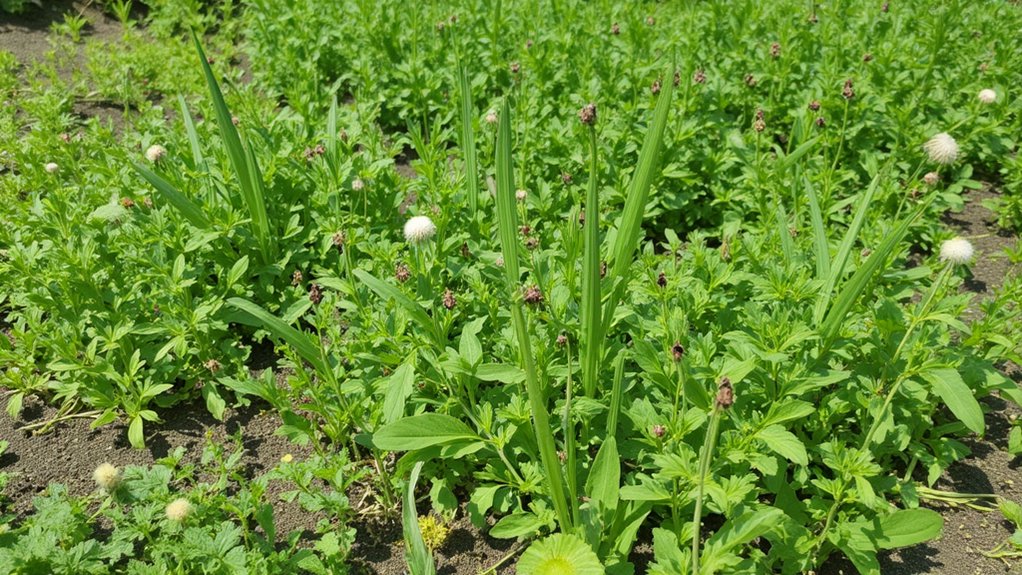
While you might think a few extra weeds in your garden are no big deal, they’re actually a magnet for pests. These unwanted plants provide shelter and food for bugs like aphids and beetles. You’ve gotta act fast to stop an infestation.
Pull those weeds out by the root, ideally every week, to keep them under control. Use gloves and a hand trowel for stubborn ones, digging at least 2 inches deep to guarantee you get everything. Don’t just yank the tops off; that won’t solve the problem.
Check your garden daily, especially after rain, when weeds pop up quicker. Spend 10 minutes scanning a 10-square-foot area, removing any new growth. Trust me, staying on top of this saves you bigger headaches later.
Untrimmed Hedges Attract Pests
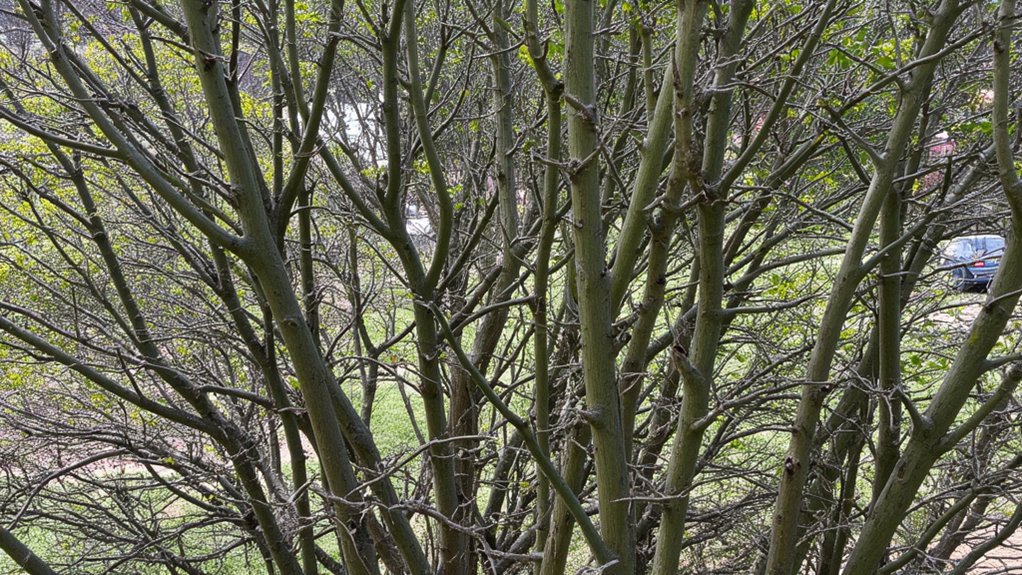
If you’ve got untrimmed hedges, you’re basically rolling out the welcome mat for pests. Those overgrown branches create perfect hiding spots for critters like aphids, spiders, and rodents. They’ll nest there, breed, and soon overrun your garden if you don’t act fast.
So, grab your pruning shears and get to work. Trim your hedges every 6-8 weeks, cutting back at least 6 inches of overgrowth, especially near the base. This reduces dense areas where pests love to hide, making your yard less inviting.
Don’t just hack away, though; shape them properly. Use clean, sharp tools to avoid stressing the plants, and clear away clippings immediately. Pests won’t stick around if there’s nowhere to settle, so stay consistent with this routine.
Stagnant Water Attracts Pests

As you maintain your garden, don’t overlook stagnant water; it’s a magnet for pests. Mosquitoes, flies, and other creepy-crawlies love breeding in still puddles, turning your yard into their personal nursery. Check for water pooling in pots, old tires, or clogged gutters after rain.
Start by emptying containers within 24 hours of rainfall, ensuring no water sits longer than a day. Next, inspect birdbaths; refresh the water every 2-3 days to prevent larvae growth. If you’ve got a small pond, consider adding a pump to keep water moving, disrupting pest breeding cycles.
Lastly, fix leaky outdoor faucets that create tiny puddles. Walk your garden weekly, scanning for hidden wet spots. A little effort now saves you a buggy headache later!
Rotting Fruit Attracts Pests
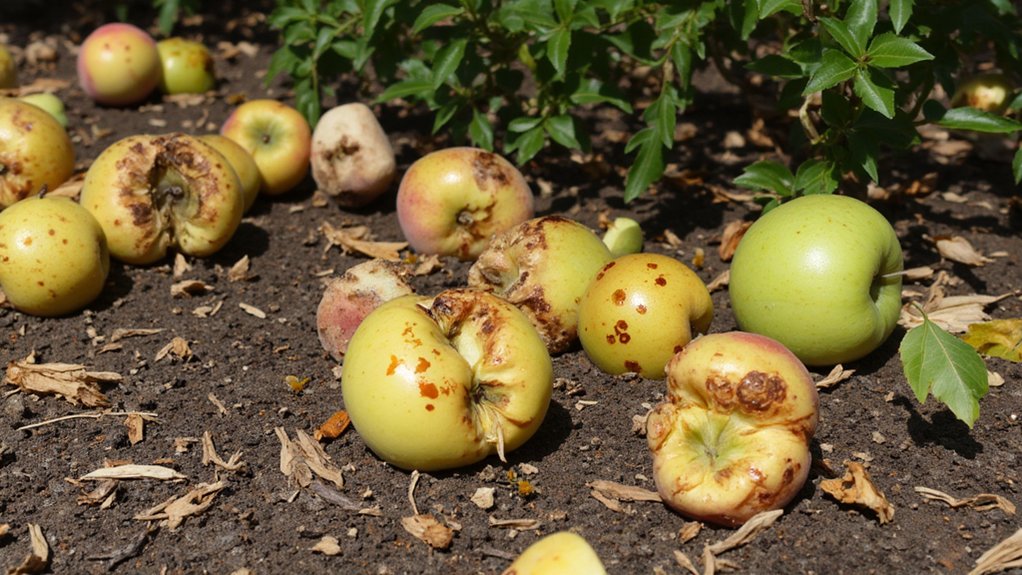
Hey, let’s shift focus from water woes to another sneaky pest magnet in your garden. Rotting fruit, lying around, draws pests like flies and wasps fast. You’ve gotta check your trees and bushes daily for overripe or fallen fruit.
Don’t let apples or peaches sit on the ground, as they’re a buffet for critters. Pick up any fruit within 24 hours of falling, and toss it into a sealed compost bin or trash bag. If you can’t use it, don’t leave it there to decay.
Also, inspect your harvest regularly, especially during peak season. Remove damaged fruit before it rots, ideally cutting it out with a clean knife. Store good fruit in a cool, dry spot to avoid attracting unwanted guests.
Uncleaned Tools Attract Pests
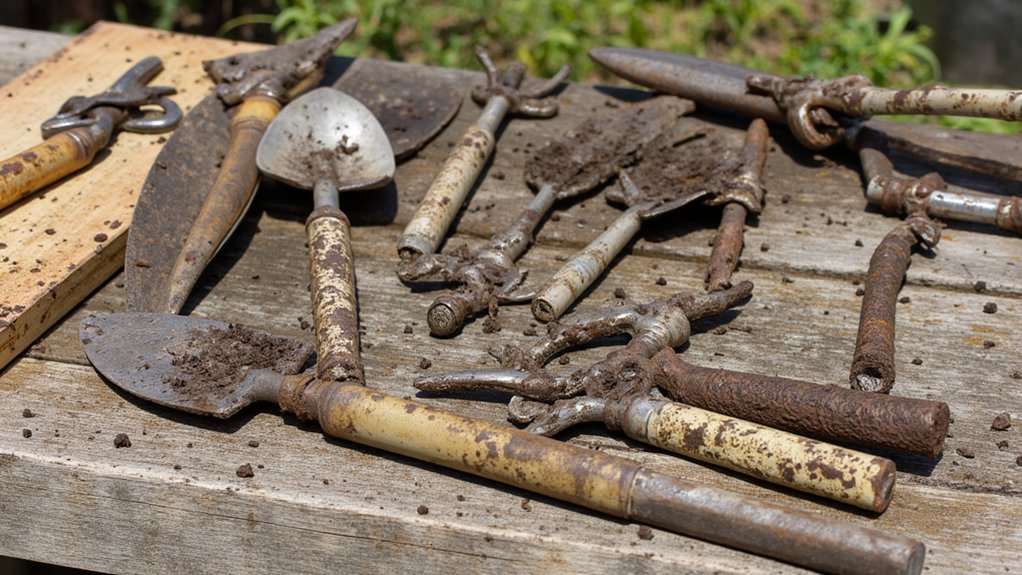
While you’re tidying up fallen fruit, don’t overlook your garden tools as a sneaky pest hideout. Dirty shovels, trowels, and pruners can harbor tiny critters like aphids or spider mites, just waiting to infest your plants. Leftover soil or plant bits on tools become a cozy spot for pests.
Compost Piles Attract Pests
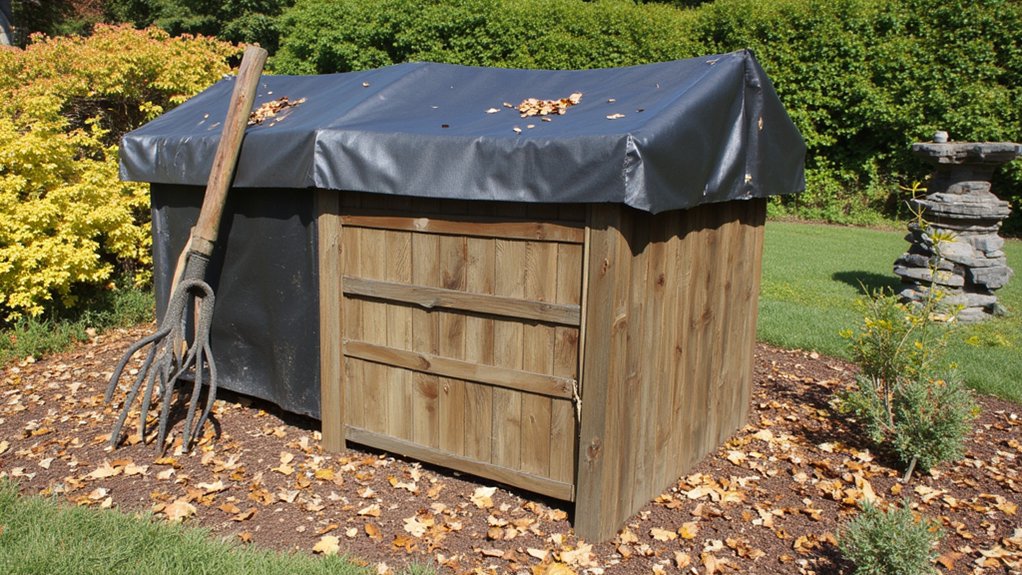
Gardeners, beware of your compost pile turning into a pest magnet. It’s a haven for rodents, flies, and other critters if you’re not careful. They’re drawn to food scraps, especially meats and dairy, which you shouldn’t add.
So, stick to veggie peels, coffee grounds, and yard waste only. Turn your pile every 3-5 days with a pitchfork to aerate it, speeding up decomposition. This cuts down on smells that attract pests.
Also, keep it covered with a tight lid or tarp, ensuring no gaps bigger than 1 inch. Place your pile at least 10 feet from garden beds to avoid luring pests closer. Check weekly for signs of unwanted visitors, and adjust as needed. You’ve got this!
Excess Mulch Attracts Pests
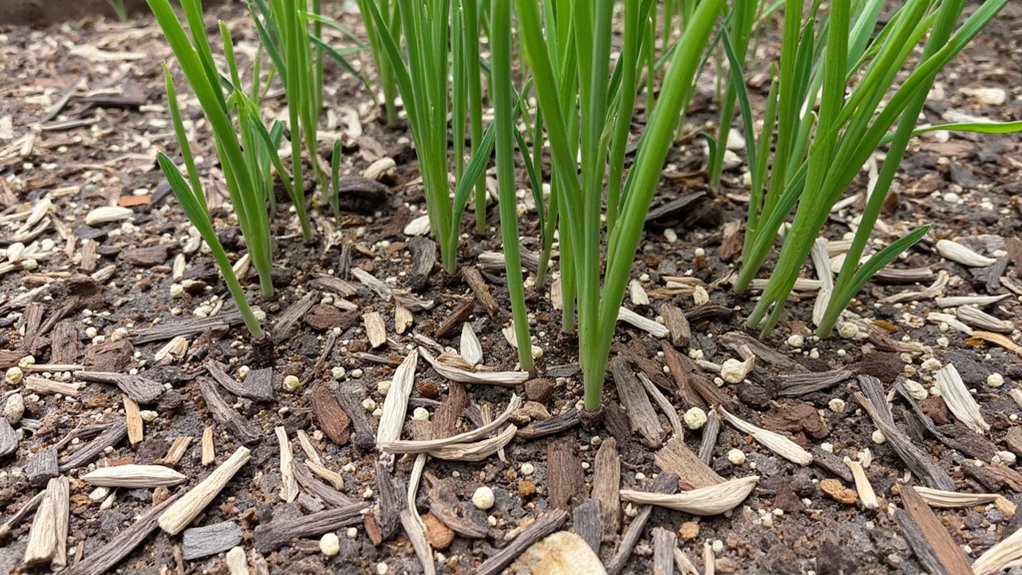
Take a close look at your garden beds, because too much mulch can invite trouble. You might think piling it on protects plants, but excess layers, over 3 inches deep, create a cozy hideout for pests like slugs, rodents, and insects. It traps moisture, encouraging rot and fungal issues too.
So, scale back, my friend, and keep mulch at a 2- to 3-inch depth. Spread it evenly, leaving a 1-inch gap around plant stems to avoid smothering them. Check it every few weeks, especially after rain, to prevent matting.
If you’ve got heaps already, grab a rake and thin it out today. You’ll cut down pest habitats and keep your garden healthier with this simple fix.
Dirty Bird Feeders
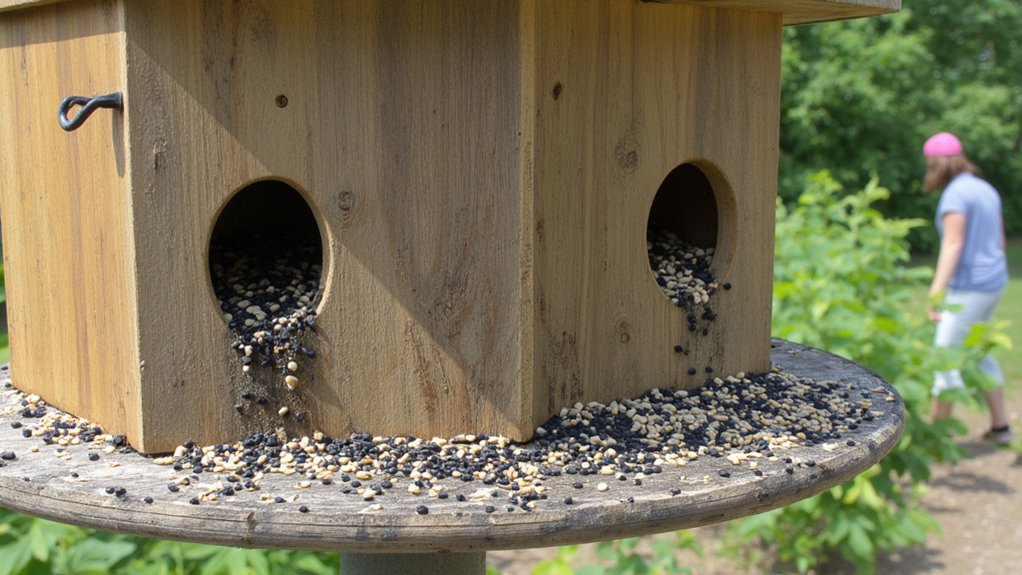
Before you hang that bird feeder, let’s talk about a sneaky pest magnet: dirty bird feeders. They’re a haven for pests like rats, mice, and insects, drawn to leftover seeds and mold. If you don’t clean them, you’re basically rolling out a welcome mat for trouble.
So, tackle this issue head-on with a simple routine. Every two weeks, empty the feeder completely, scrub it with a mix of one part vinegar to nine parts water, and rinse thoroughly. Use a stiff brush for stubborn grime, especially in corners. Dry it fully before refilling to prevent mold growth.
Don’t slack on this, or pests will keep coming back. A clean feeder means fewer critters and happier birds in your garden.
Cluttered Garden Sheds
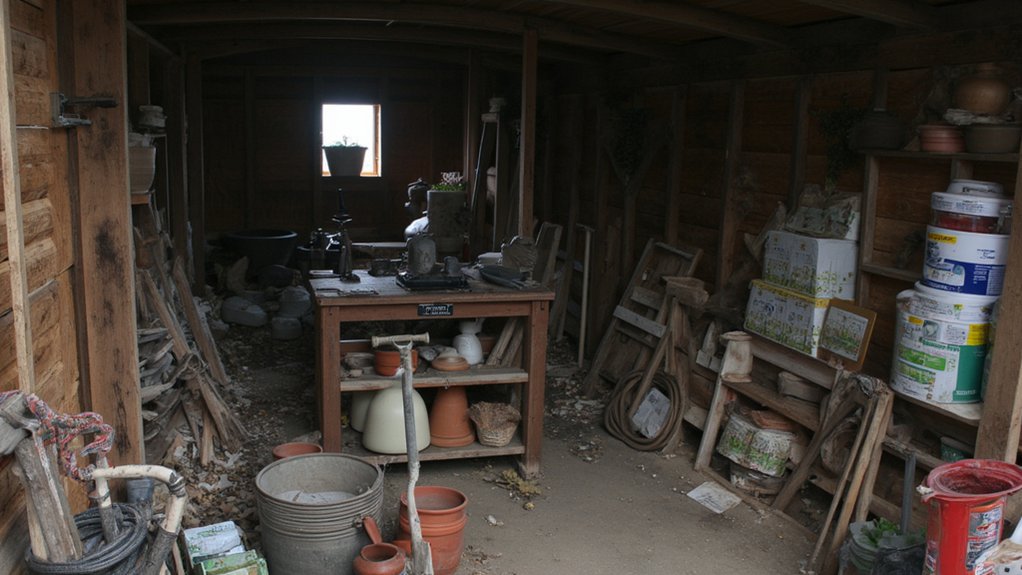
While you might see your garden shed as just storage, it’s often a hidden pest paradise. Pests like mice, spiders, and wasps love the clutter, seeking shelter in forgotten corners. A messy shed, packed with old tools and boxes, gives them perfect nesting spots.
So, start decluttering now, and don’t delay. Clear out items you haven’t used in over a year, and organize what’s left on shelves, at least 12 inches off the ground. Sweep the floor weekly to remove debris, and check for cracks in walls or doors every month.
Seal gaps with caulk, no wider than ¼ inch, to block entry. Store pesticides in sealed containers, away from damp areas. With these steps, you’ll keep pests out for good.
Overripe Vegetables Attract Pests
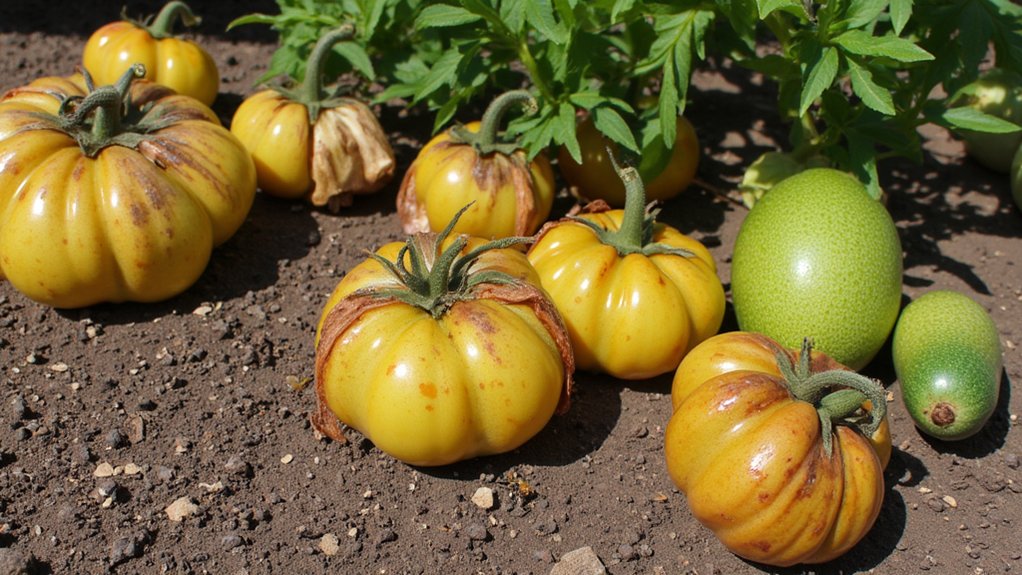
As soon as you notice overripe vegetables in your garden, act fast to prevent a pest invasion. Those squishy tomatoes or soft zucchini aren’t just ugly; they’re pest magnets, drawing in flies, beetles, and rodents. Check your plants daily, especially during peak harvest times, to catch overripeness early.
Don’t let fallen or rotting veggies sit there. Grab a bucket, pick them up within 24 hours, and toss them into a sealed compost bin at least 50 feet from your garden. This keeps pests from sniffing out an easy meal. If composting isn’t an option, bag them tightly and throw them in the trash.
Lastly, harvest ripe veggies promptly. Waiting too long invites trouble, so stay on top of it, okay?
